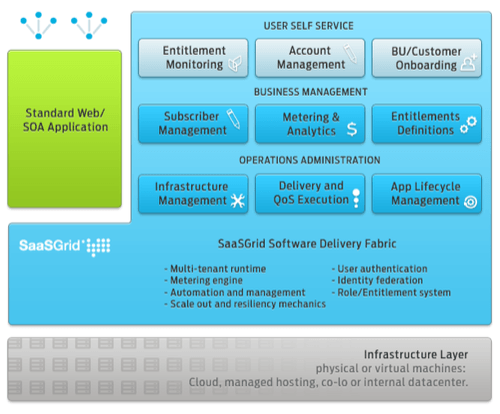What are the alternatives to a private cloud? The question surfaced as I spent some time over breakfast this morning talking with Sinclair Schuller, CEO, Apprenda, which has developed what it calls a Google App Engine for the enterprise. In a sense – a private PaaS.

SaaSGrid runs between an enterprise infrastructure and the application. It changes behavior for the run-time of .NET applications so it can run in a neutral environment. It provides a middleware that abstracts the issues that developers face inside the enterprise. It serves as a private PaaS environment for managing applications. In that way, it’s similar to Google App Engine.
The SaaSGrid Web site states that the software is deployable on-premises or in the cloud. It stitches together Windows Server, SQL Server, and IIS instances into a single SaaS platform instance for your .NET Web and SOA applications. It has architecture qualities like multi-tenancy, scale-out and high availability. It integrates into SaaSGrid, which provide capabilities like application patching, customer provisioning, pricing management and billing/collections workflows – all manageable through point and click web portals.

What does that mean?
For one thing, It helps developers who use Agile methodologies to work faster with system administrators. It can be accessed internally like a Google App Engine. From within that internal platform, the developer can develop and launch applications while at the same time abiding by IT requirements.
That serves as a platform that has use cases in a few ways. Franchises, for instance, can use it to point store managers to an application that is on the SaaSGrid. Benefits providers can create an internal network that provides members with an account page. And it works internally for business critical applications.
There are alternatives to the private cloud, which still has its own relative value. But a service like SaaSGrid offers a way to have an internal platform that allows developers to iterate faster on applications while staying within the guidelines of the IT department.










